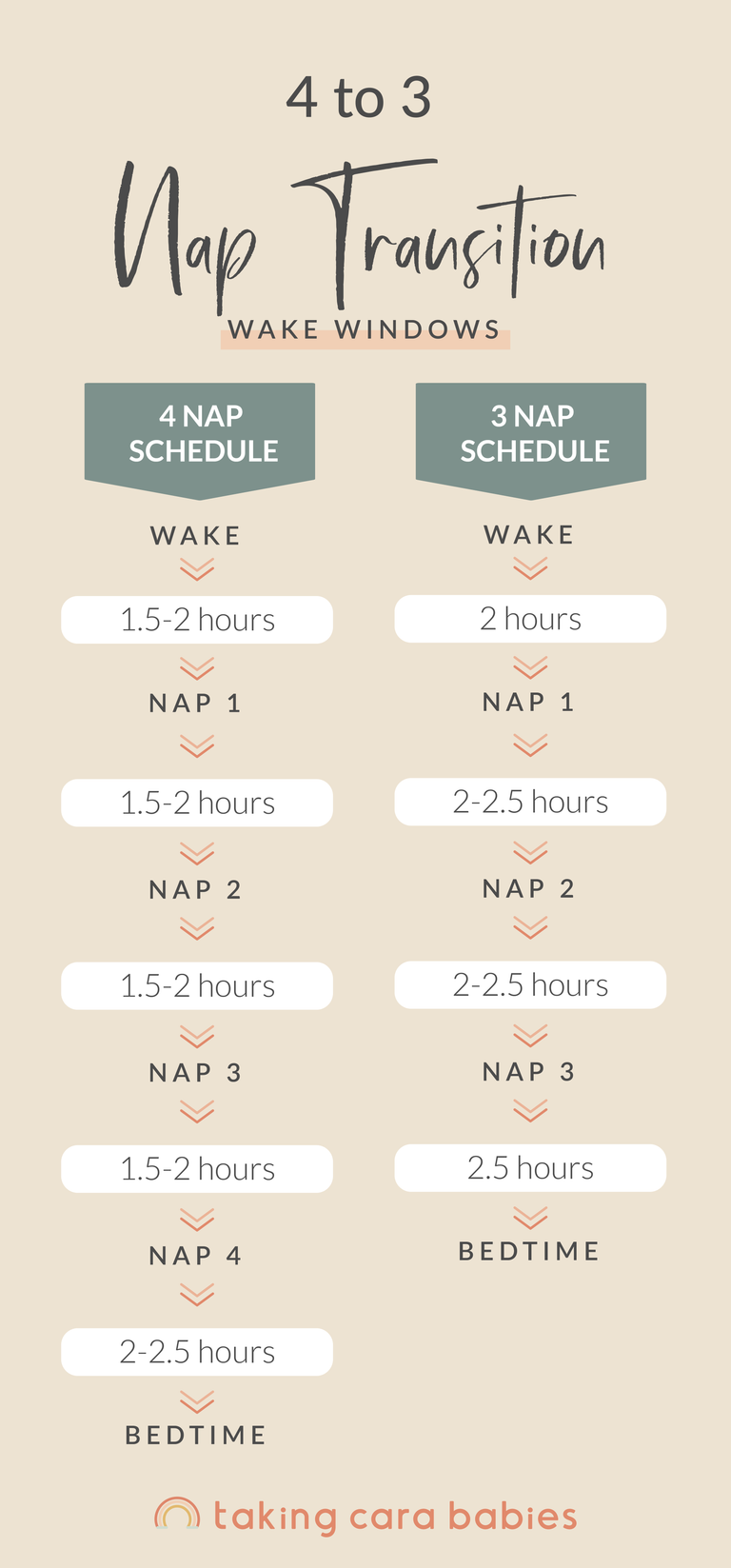Just as you’ve settled into a routine with your baby, things seem to change. During these early months, there is constant growth and development that can impact sleep. If your baby is taking 4 (or more) naps and sleep is feeling a bit tricky, it could be time to drop a nap. I’d love to share the signs of the 4 to 3 nap transition and help you with the steps for dropping that 4th nap.
Taking Cara Babies Classes
When do babies drop to 3 naps?
The typical age for the 4 to 3 nap transition is between 4-5 months; some babies may transition a little earlier and some will be ready a little later. By the time your baby is around 5 months, we do want to aim for 3 naps each day. See my tips for how to do this below.
Expert Tip: Until about 5 months, it’s possible that the number of naps your baby takes will vary from day to day depending on how long your baby naps. Don’t let this worry you!
What are the signs my baby is ready for 3 naps?
Your baby may be ready for the 4 to 3 nap transition if they are between 4-5 months AND:
-
have trouble falling asleep at nap time and/or bedtime
-
are waking shortly after bedtime
-
start to regularly protest or refuse the last nap
-
struggle with short naps
-
require a bedtime after 8:00 pm in order to fit the fourth nap into the day
-
experience early morning wakings almost daily
If your baby is 3-5 months and is showing changes in sleep, it could also be the 4 month sleep regression.
What are the wake windows for the 4 to 3 nap transition?
For a consistent three nap routine, wake windows are between 2-3 hours. Typically when a baby is ready for the 4 to 3 nap transition, they are able to stay awake close to 2 hours for the first wake window of the day. Each wake window tends to increase as the day goes on, so by bedtime your baby will be able to stay awake for about 2.5 hours.
Which nap gets dropped during the 4 to 3 nap transition?
The last, or fourth, nap of the day is the nap that is dropped during this transition. When making the transition from 4 naps to 3, wake windows lengthen which shifts all naps a bit later. Eventually, the fourth nap is no longer needed as your baby is able to handle more awake time and naps become more consistent.
How long does it take to transition from 4 naps to 3?
Some little ones transition from four naps to three fairly quickly, while others can go back and forth between 3 and 4 naps for around 2-4 weeks. Much of this depends on the length of your baby's naps.
Please know that it’s very common to see short naps at this age (think 20-45 minutes). Naps usually don’t begin to become predictable and consistent until around five months of age. Did you catch that? Short naps are normal and developmentally appropriate for those first five months (and even a bit longer for some babies). If you’re struggling with naps, check out my blog: What to Do When Your Baby Won't Nap for more help.
How do you transition to 3 naps?
-
Focus on active awake time in the morning. The trickiest part about transitioning from 4 naps to 3 is that the wake windows needs to be longer than they were before. Stretch wake windows by adding engaging activities.
-
Continue with a nap time routine. A predictable nap time routine sets your little one up for a restorative nap.
-
Use an early bedtime if the one nap is short that day. If the last nap ends earlier than expected, it may be difficult to keep your baby awake until their normal bedtime. A bedtime as early as 6:00-6:30 pm can help.
-
Ask for help when you need it. If your little one is struggling with sleep or you’d like more guidance with this transition, I have classes for you. If your baby is around 5 months or older, my 5-24 Month Collection will give you step-by-step guidance to set your little one up for great days and consolidated nights. Not sure which class is right for your baby? Check out Which Class Should I Take?











